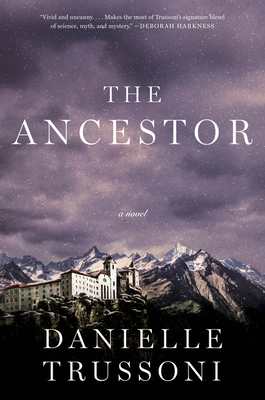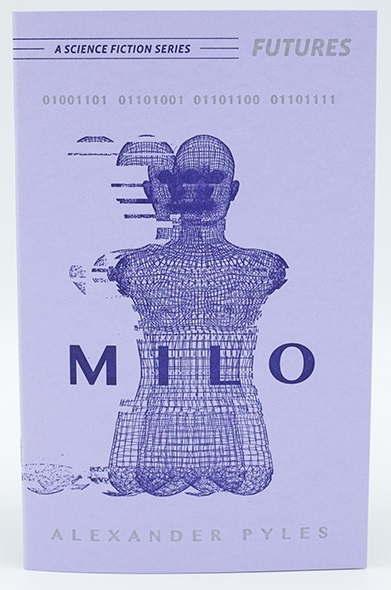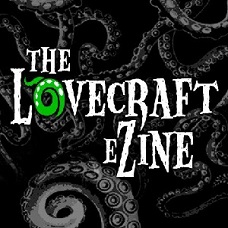 If someone were to ask me to direct them to a modern gothic novel, I’d point them straight to The Ancestor by Danielle Trussoni. While I was drawn to the story by the premise of discovering a monstrous ancestry, I just did Ancestary.com last month, the sense of the gothic is what truly fascinated me about this read. Of course, cryptozoology also plays a significant role in the plot, and, since I previously won a contest concerning cryptid monsters for my flash fiction, Feeding Time, those elements of the story appealed to me too. Overall, Trussoni brought all the eclectic elements together into a perfect mix.
If someone were to ask me to direct them to a modern gothic novel, I’d point them straight to The Ancestor by Danielle Trussoni. While I was drawn to the story by the premise of discovering a monstrous ancestry, I just did Ancestary.com last month, the sense of the gothic is what truly fascinated me about this read. Of course, cryptozoology also plays a significant role in the plot, and, since I previously won a contest concerning cryptid monsters for my flash fiction, Feeding Time, those elements of the story appealed to me too. Overall, Trussoni brought all the eclectic elements together into a perfect mix.
The novel opens with the protagonist, Alberta, finding out she’s the heir to the prestigious Montebianco family in Italy. I absolutely loved this setup because I had no second thoughts about why Alberta would be willing to go off and visit her family’s ancestral castle in exchange for a fortune. If someone told me I was royalty and had a castle, and I could pay off my student loans, I’d be on the first plane to Italy too. In horror stories, even exceptionally good ones, I often struggle to rationalize why the protagonist investigates a strange noise, heads into a spooky basement, etc. Trussoni deftly dodges that pitfall, and you totally buy Alberta’s willingness to travel to an isolated castle in the Alps. Before I get into some spoilers, I should also add that I listened to this story on Audible, and the reader, Heather Masters, did an incredible job bringing the narrative to life.
Spoilers Below (although I try to keep things vague)
Most of the story takes place in the Montebianco Castle, and you get the strongest gothic horror vibes from this section. Alberta becomes more and more aware of her own isolation as the helicopter that dropped her off doesn’t come back, and the harsh winter weather makes any other escape from the Alps impossible. She also gets better acquainted with the family’s dark secrets while exploring the castle and getting to know the residents. Throughout this part of the book, I kept assuming her ex-husband, Luca, would eventually show up and save her. I was conflicted on this point because, while I liked Alberta and wanted her to be okay, I didn’t want to see her turned into a damsel in distress rescued by her ex. Thankfully, Trussoni made a shocking decision regarding the character of Luca and his super nice father. This was the highlight of the book for me because it took me by complete surprise. Everything after that moment felt like icing on an already delicious cake because my assumptions on where the narrative was heading vanished.
The horror in this story comes from a lot of different places too. First, there’s the horror of isolation, Alberta being trapped in Montebianco Castle reminded me of The Shining at many times, except, in The Ancestor, the protagonist isn’t confined with family. Instead, she’s trapped with strangers, like the dangerous groundskeeper. Next, there’s the horror of Alberta’s monstrous ancestry. This plays out in two ways. One, she inherits a high risk of miscarriage. Two, there’s the horror of the actual identity of some of her relations, who are, let’s say, unique beings. All these ingredients culminate in a terrific book-stew. And I didn’t even mention the fast pace, which keeps you moving through the story quickly.
I highly recommend giving The Ancestor a read or listen. I first heard about it by watching The Lovecraft eZine, and if you’re on the fence about picking up the book, I suggest giving that interview a watch (it’s linked here). Trussoni also wrote Crypto-Z, a narrative podcast, that ties into The Ancestor, and I’ve listened to the first episode, which was excellent. Lastly, I had the pleasure of attending Trussoni’s first Writing Hang-Out Session via Zoom, and I enjoyed getting to listen to the attending writers and Trussoni discuss their work. I believe it’s open to any interested writers, and you can find the details about attending here.




 When I first read H.P. Lovecraft’s The Colour Out of Space, I was immediately excited at the thought of writing a sequel. The ending makes continuing the story an enticing proposition. When I investigated the subject, I found Michael Shea had already written a second installment, The Color Out of Time. This didn’t stop me from writing my own follow-up,
When I first read H.P. Lovecraft’s The Colour Out of Space, I was immediately excited at the thought of writing a sequel. The ending makes continuing the story an enticing proposition. When I investigated the subject, I found Michael Shea had already written a second installment, The Color Out of Time. This didn’t stop me from writing my own follow-up, 
 01001101 01101001 01101100 01101111 00100000 01101001 01110011 00100000 01100111 01101111 01101111 01100100 (
01001101 01101001 01101100 01101111 00100000 01101001 01110011 00100000 01100111 01101111 01101111 01100100 (




